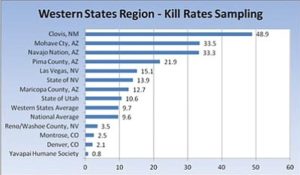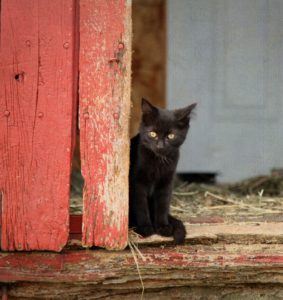Many studies over the years have demonstrated conclusively that young people who torture and kill animals are prone to violence against people later in life if it goes unchecked. Finally, this knowledge is being applied by law enforcement in an effort to identify and intervene in the lives of young animal abusers before they become serial and/or mass murderers.
For years, the FBI has filed animal abuse crimes under the label “other” – thus lumping them with a variety of lesser crimes. This makes cruelty crimes hard to find, count and track. The bureau announced this month that it will make animal cruelty a Group A felony with its own category in the same way crimes like homicide, arson and assault are listed.
This new federal category for animal cruelty crimes will help identify animal abusers before their behavior worsens. It will also encourage prosecutors and judges to take these crimes seriously.
It is hoped this new category will result in more appropriate sentences, more influence with juries, and the ability to make more meaningful plea bargains.
The special category will also help law enforcement officials identify young offenders, and hopefully help offenders realize early that with the right help they need not turn into a Jeffrey Dahmer later.
With this new category, law enforcement agencies will soon be required to report incidents and arrests in four areas: simple or gross neglect; intentional abuse and torture; organized abuse, including dogfighting and cockfighting; and animal sexual abuse.
“The immediate benefit is that it will be in front of law enforcement every month when they have to do their crime reports,” said John Thompson, interim executive director of the National Sheriffs’ Association who worked to get the new animal cruelty category instituted. “That’s something we have never seen.”
Law enforcement officials will soon understand that this data provides an important crime fighting tool, and its “not just somebody saying the ‘Son of Sam’ killed animals before he went to human victims, and 70-some percent of the school shooters abused animals prior to killing people,” said Thompson, a retired assistant sheriff from Prince George’s County, Maryland.
FBI studies show that serial killers like Dahmer impaled the heads of dogs, frogs and cats on sticks; David Berkowitz, known as the “Son of Sam,” poisoned his mother’s pet; and Albert DeSalvo, aka the “Boston Strangler,” trapped cats and dogs in wooden crates and killed them by shooting arrows through the boxes.
It will take time and money to update FBI and law enforcement databases nationwide, revise manuals and send out guidelines, Thompson said, so there won’t be any data collected until January 2016. After that, it will take several months before there are numbers to analyze.
The new animal cruelty statistics will allow police and counselors to work with children who show early signs of trouble, enabling professionals to intervene early when a preschooler is known to be hurting animals – so hopefully the urge to hurt can be mitigated before humans become targets.
The FBI’s category will track crimes nationwide and is bound to give animal cruelty laws in all 50 states more clout. Many states are seeing more of those convicted of animal cruelty being sentenced to prison in marked contrast to years past.
Whether talking about state laws or the FBI change, it is clear “that regardless of whether people care about how animals are treated, people – like legislators and judges – care about humans, and they can’t deny the data,” said Natasha Dolezal, director of the animal law program in the Center for Animal Law Studies at Lewis & Clark College in Portland, Oregon.








 Although many of us think our dog is clever enough to understand us, this confidence has never been tested by science – until now.
Although many of us think our dog is clever enough to understand us, this confidence has never been tested by science – until now.